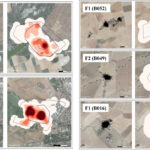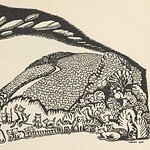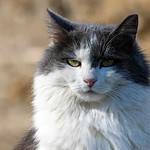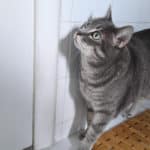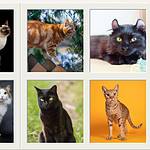Hydration is important for your cat. Just like in humans, getting enough water is important for proper biological functions. Daily access to fresh, clean water is an essential part of maintaining the health of your cat.
Cats, especially ones on a mainly dry food diet, need access to fresh water. Dry food typically contains 6-10% water. Wet food, in contrast, contains about 75% water.
Keep Your Cat’s Water Dish Away from the Food Dish
Your cat seems to love to drink from the water faucet or even from your class but doesn’t ever seem to touch his or her water bowl in the kitchen. Have you ever wonder why? Chances are, it’s because you have the water bowl too close to your cat’s food.
As humans, we are used to settling down with a drink while we eat our meals. We automatically assume our cats want the same setup.
In fact, cats don’t like their water near their food source. Why? From an evolutionary standpoint, cats learned that prey can contaminate water, leading to disease.
So set your cat’s water dish away from where he or she eats.
Don’t Put Your Cat’s Water and Food Dish Near the Litter Box
The same logic applies when it comes to serving your cat food or water near the litter box. Make sure the litter box is in a different room from where you offer food and drink.
If space is limited, then try to put the litter box into an enclosed area or set the food and water dishes as far as possible from the box. Place the water dish higher up on a table or a shelf to keep the water dish separate from the food and the litter box.
Pick the right type of bowl
Cats don’t like it when their whiskers brush the sides of their water and food dishes. A cat’s whiskers are highly sensitive to external touch and when a dish is too narrow, it can cause “whisker stress” (also known as whisker fatigue). If your cat’s dish is stressing out your cat, they may avoid drinking from it.
Some cats are also sensitive to the material of their bowls. Bowls that are plastic can develop scratches where bits of food and bacteria can become embedded. This can lead to cat acne as well as the dish producing unpleasant smells or tastes. Cats are conditioned to avoid eating and drinking from areas that smell of decay.
Try to opt for ceramic or stainless-steel bowls over plastic ones. It’s good to experiment with different styles to find one your cat prefers.
Keep that Water Fresh
Make sure you refresh the water bowl often. Don’t leave water out for days where it can become stale and contaminated with food and debris.
Make sure your cat’s water bowl is clean. I make it a habit to put down fresh water in clean bowls every morning along with breakfast.
Pay attention to how and where your cat likes to drink water
I have found that one of the best ways to get my cats to drink more is to bring the water to them.
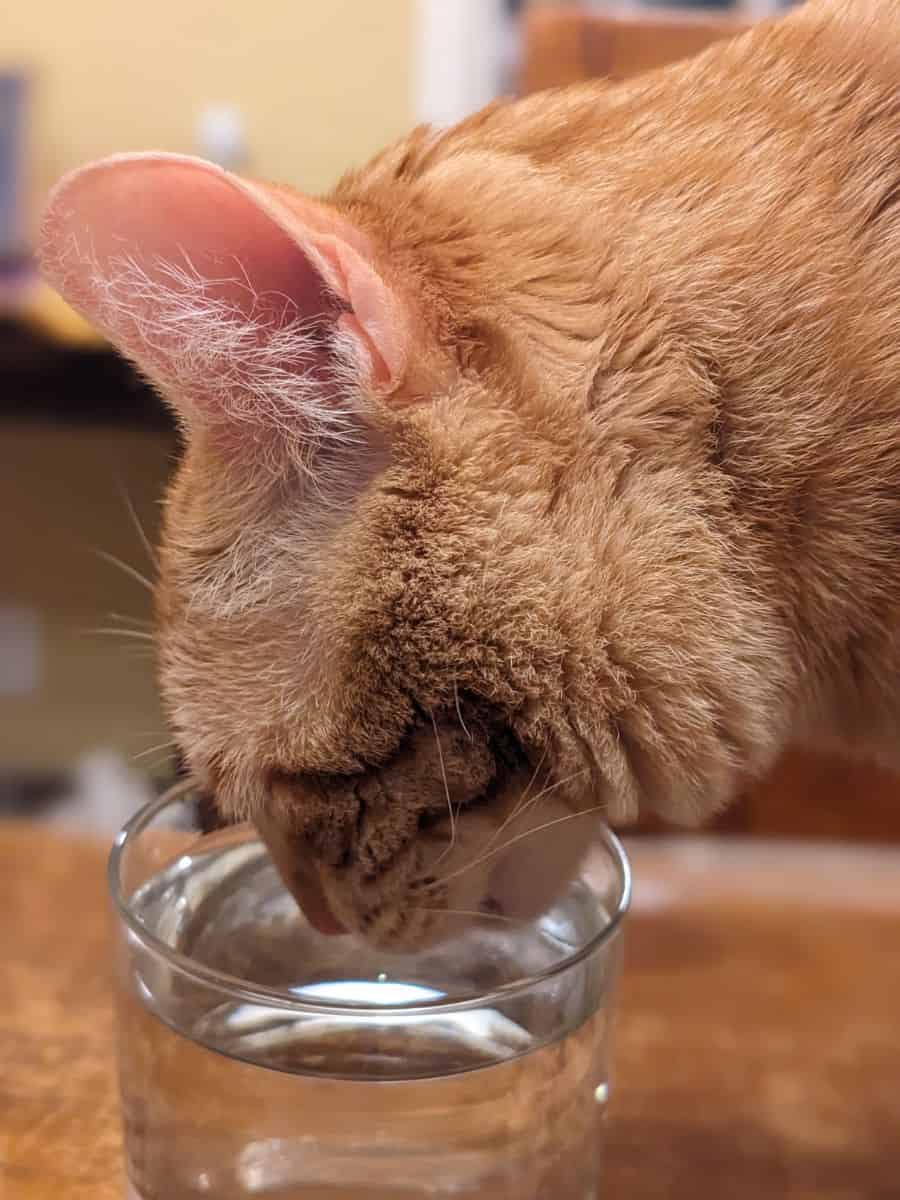
My cats don’t really drink the water that’s out in the kitchen near their food bowls. Where they love to drink from is from MY glass.
My cats like to hang out at the table where I work and will help themselves to any glasses of water they come across. So, to remedy this, I will set out some decoy glasses of water for them to drink from. This (mostly) keeps them away from my personal glass of water and encourages my cats to drink more. After all, stolen water is clearly more delicious than the water in the cat water bowls.
Offer Running Water
Another place cats seem to love to drink water from is in the bathroom.
Cats love to drink from running water. Cats may not like getting a bath but many love to be near running water. I have one cat that loves to join me at the sink every morning so she can drink straight from the faucet.
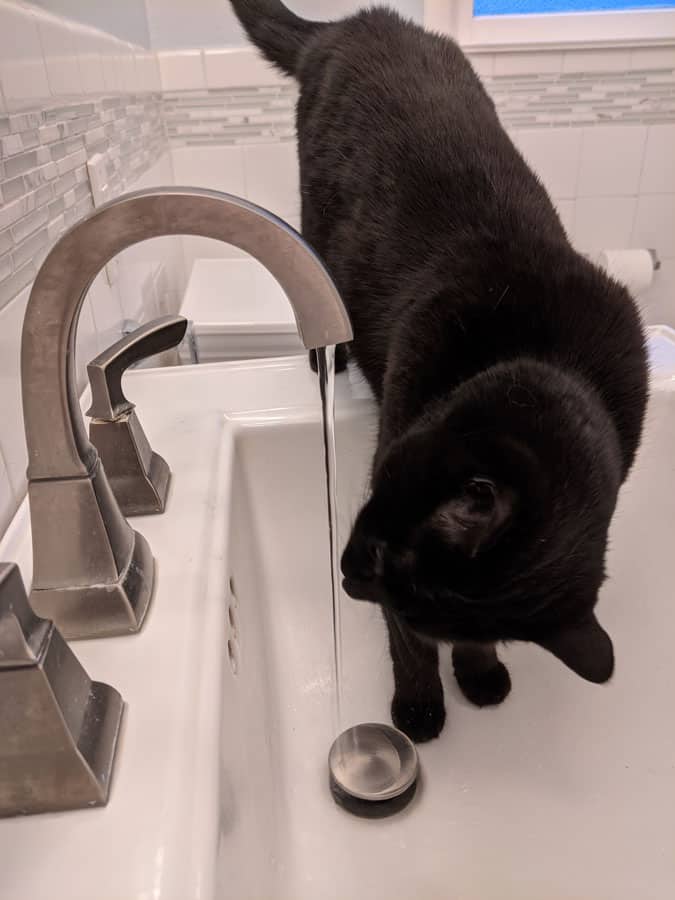
Another cat loves to have the bathtub filled with a little bit of water so he can drink from there. To keep the cats happy, I ended up keeping a fresh bowl of water sitting in the shower stall to satisfy their thirst.
One option for offering a source of running water is a cat water fountain. Pet fountains provide a continuous circulation of water which appeals to the cat’s inherent desire to drinking from a source of running water.
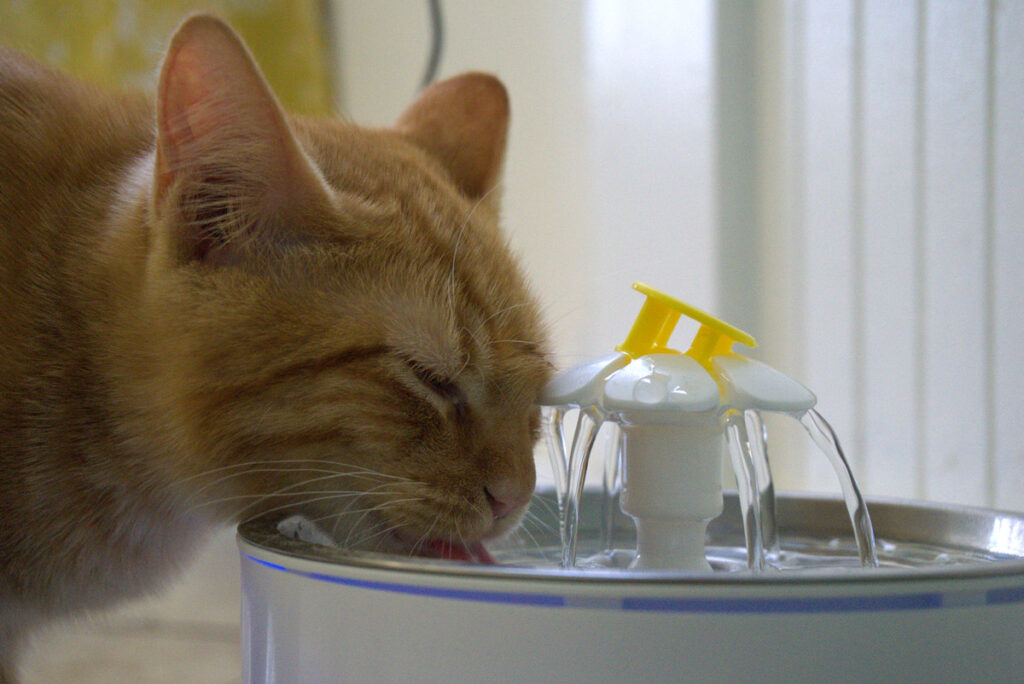
Offer water through your cat’s food
Wet cat food can provide a good amount of your cat’s daily water requirements. In contrast, dry food has very little amount of stored water.
Canned cat food can contain as much as 80% water versus only 10% for dry food. Cats who are on an exclusively dry food diet require a lot more supplemental water than cats on a wet food or mixed wet food and dry food diet.
How much water is too much for cats?
Excessive drinking by cats is know as polydipsia and can indicate a health issue in your cat. A ten-pound (4 kg) cat should be drinking (or consuming with their food) about a cup of water a day.
If you notice your cat drinking or peeing more than normal, it’s best to have your cat examined by a veterinarian to make sure there isn’t a health issue.
How do cats drink water?
Researchers in 2010 analyzed the mechanics of how cats drink liquids. Researchers from MIT, Virginia Tech, and Princeton discovered that the top of the cat’s tongue is the only surface that comes into contact with the liquid in recent high-speed images.
If you’ve ever watched dogs drink, you will notice they don’t drink like cats. The lapping process of the cat is more subtle and the cat will dip just the tip of its tongue into the liquid. A column of liquid forms between the traveling tongue and the liquid’s surface as it does so. The cat then shuts its mouth and pinches off the top of the column for a drink, keeping its chin dry.
When the cat’s tongue comes into contact with a liquid surface, some of the liquid adheres to it due to liquid adhesion, similar to how water adheres to a human palm when it comes into contact with a pool’s surface.
The cat’s tongue is drawn back up so quickly that inertia overcomes gravity for a fraction of a second, pulling the liquid down down into the cup. The cat then shuts its mouth before gravity overtakes inertia.
You can watch a slow-motion video showing this action here:
How Fast Do Cats Drink?
That same research found that domestic cats drink at a rate of four laps per second.
References
Feeding your cat. (2017, July). Cornell University College of Veterinary Medicine. https://www.vet.cornell.edu/departments-centers-and-institutes/cornell-feline-health-center/health-information/feline-health-topics/feeding-your-cat
Increased drinking and urination in cats — Elwood vet. (n.d.). Elwood vet. https://www.elwoodvet.net/increased-drinking-and-urination-cats
Reis, P. M., Jung, S., Aristoff, J. M., & Stocker, R. (2010). How cats lap: water uptake by Felis catus. Science, 330(6008), 1231-1234. DOI: 10.1126/science.1195421
This article was originally written on May 22, 2021 and has since been updated.

